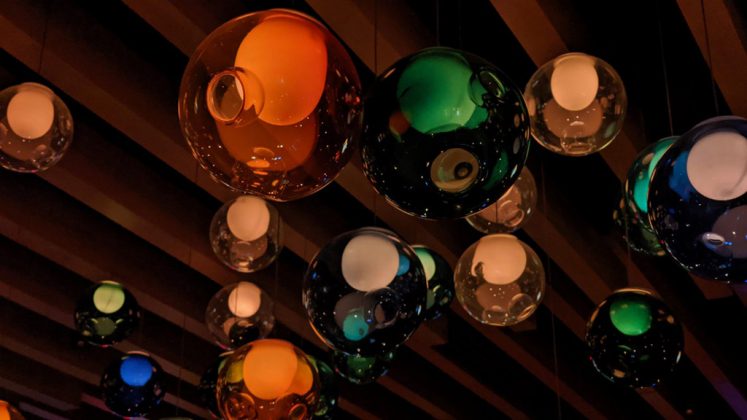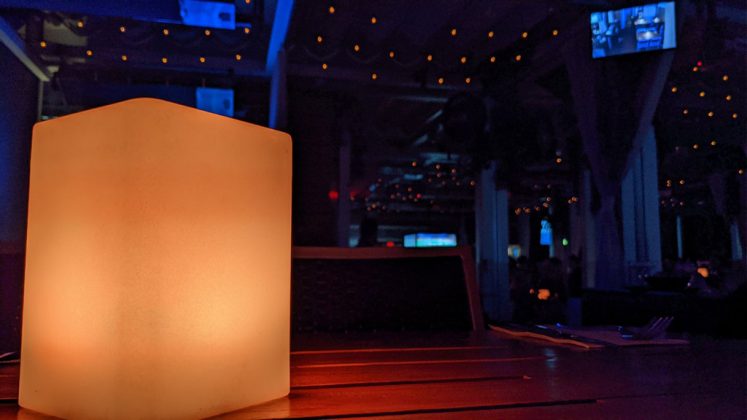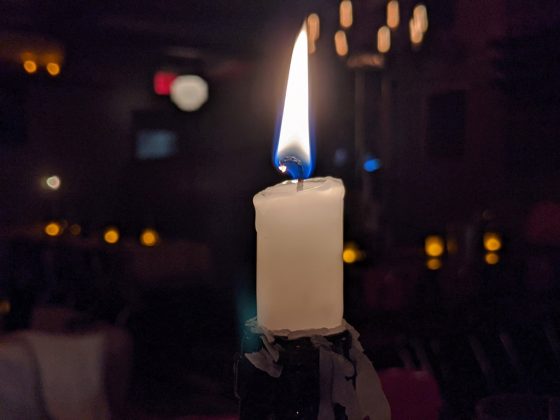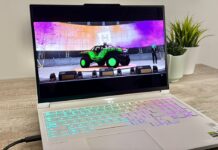![]()
The new Google Pixel 4 and Pixel 4 XL look and feel more familiar than you might think, with the latest features being truly subjective.
By now, any Pixel phone from Google has some cachet attached to it. They’ve been premium flagships—save for the Pixel 3a—promising features and camera performance you really want to use. These two phones feel more experimental that way. What Google introduced here is partly intriguing, and partly gnawing.
Both are all but entirely similar, save for the screen and battery sizes, showing little other differentiation, otherwise. As I refer to the “Pixel 4” henceforth in this review, I’m referring to both devices, unless I specifically point something out.
Google Pixel 4 & Pixel 4 XL SpecsDisplay: 5.7-inch 2280 x 1080 OLED display 19:9 aspect ratio with 444 pixels per inch (6.3-inch for XL) |
Design and features
Yet again, Google isn’t going for fashionable accolades. Well, at least it doesn’t seem like it. Where other phones keep trimming away on the bezels, they’re noticeably present here on the Pixel 4’s 5.7-inch and Pixel 4 XL’s 6.3-inch displays.
Despite that, two things immediately stood out to me. First, the “oh so orange” colour is a favourite for me. It’s almost like a coral shade, and looks gorgeous—a unique colour for a phone. The second is the camera array on the back featuring the second zoom lens. I’ll get to the camera further down, but the squarish bump on the back takes the Pixel to a very different look in the rear, now that there is more than one lens.
Unfortunately, Google sacrificed the rear fingerprint sensor from the previous models. Not because of the camera, but rather the radar sensor the company calls Soli. Soli’s size and supporting hardware under the hood—particularly for the smaller Pixel 4—cut into the space needed for both the fingerprint sensor and a bigger battery. That’s why the Pixel 4 has a smaller battery inside than the Pixel 3 or 3a have.
In lieu of a fingerprint sensor, Google went with a face unlock feature using the front camera. Personally, I’ve never liked face unlock options on smartphones, preferring a combination of fingerprint and PIN code, but I can see how some would feel otherwise. The Pixel 4’s face unlock is undoubtedly fast, but also seems to work with closed eyes. It’s a confirmed issue, and Google says it will fix it via a future software update.
Google no longer includes a USB-C headphone adapter in the box, which is a shame. There are also no earbuds, so beyond the charger, cable and USB-A adapter, there are no other accessories.
![]()
Soli and Motion Sense
The premise behind Motion Sense is idealistic, but in practice, it makes little sense at this juncture. When turned on (it’s off by default), waving your hand above the display can skip or repeat a song, silence an alarm and navigate YouTube videos. Under its current form, it simply isn’t consistently responsive. When the feature is on and active, a blue light appears at the top of the screen. I would wave my hand repeatedly, one way or the other, growing annoyed that the light wouldn’t swing to one of the top corners to indicate a success.
Google doesn’t indicate what sort of distance or cadence the feature needs, so I guessed through a lot of trial and error. When it works, it does feel satisfying, especially when the lockscreen is on, except it didn’t work often enough to warrant leaving it on. Perhaps future software updates will improve upon that, though only time will tell.
![]()
Performance and software
Much of the story here revolves around Android 10, but some new features also play their own role. A notable one is the screen’s 90Hz refresh rate. It’s on by default, and is a big reason why navigating the interface feels so smooth. Hence, Google calls the feature Smooth Display, shifting from 60 to 90Hz when the app or process might need it. You can turn it off, if you prefer not to use it.
I’m already a fan of Google’s new Recorder app and its ability to transcribe in real-time. The kicker is that it does it without data access, so it’s not “talking” to the cloud. There is a catch in that it struggles to discern two or more voices at once, but I was impressed with its accuracy when a singular voice was talking. For lectures and interviews, it’s right up there with great transcription apps like Otter. Plus, you can use it in Airplane mode.
The transcription also applies to Live Caption, an Android 10 feature that works like closed captioning on TV. It’s off by default, but click the volume up or down and you see a caption icon underneath. Tap that and you see text appear on any media with a voice. It’s currently only in English, but here’s hoping other languages come soon.
Overall, much of the Pixel 4 feels familiar, if you’ve used one before. That’s a good thing. To my mind, it is one of the best Android experiences you can find, and with regular, timely updates, it’s easy to appreciate how it works on these two phones.
One thing that did disappoint me is the fact both start at 64GB of storage. That’s simply not good enough for a device of this calibre. I would recommend the 128GB model.
![]()
Camera
The cornerstone of any Pixel phone is its camera, and that’s certainly the case here too. With tighter competition from rivals, Google seemed poised to deliver something truly fascinating. The resulting new features are really in the eye of the beholder, but a couple of keys do stand out.
Dual exposure was my favourite new feature. Phone camera apps often let you adjust the exposure with a slider that appears once you focus on a subject. The Pixel 4 offers a separate slider for shadows, giving you more control over a photo’s dynamic range. There is real utility in using both sliders together because you can capture the same scene in multiple photos, yet have very different detail in each one.
Live HDR+ is also worth noting because, for the first time, Google shows you what it’s processing as you’re about to shoot the photo. In the past, you would see the end result after you snapped an image, whereas now, you see it in real time.
It’s the second lens that got more attention when Google unveiled the Pixel 4, and the surprise is that it’s a zoom, not an ultra-wide angle lens. Like others have lamented, I also wish it had gone with an ultra-wide, especially considering how good the standard wide lens already is at taking portraits.
Interestingly, there’s no obvious way to switch between the standard wide lens (which is the same as the Pixel 3’s, by the way) and the new zoom one. You simply double-tap on the screen in the camera app to toggle between them.
The zoom lens plays a role with Portrait mode on the rear camera, remaining one of the best available. The front camera has been reduced to one, as Google also removed the ultra-wide lens the Pixel 3 introduced.
Night Sight and astrophotography
I’m addressing these two separately from the rest of the camera because of the nuances involved. Night Sight works in much the same way it did before, shooting various exposures at once to produce an image that often leads to impressive results. When it comes to low-light photos, the Pixel 4 is clearly among the best, though Apple’s iPhone 11 Pro made a huge stride forward in that department.
Where things get even more interesting is the astrophotography feature built into Night Sight. When engaged, it can literally shoot for the stars, capturing the cosmos beyond the night skies. A big caveat to this feature is that you need to be in a dark environment, away from a city or town where there’s a lot of light, or else it won’t work. Moreover, you would need to put the Pixel 4 on a tripod pointing at the sky just to have the mode kick in.
What the phone does here is take what would otherwise be a four-minute exposure on a DSLR camera and manages to compute it all in a matter of seconds. It’s fascinating stuff, though I have yet to properly test it because I haven’t found a place dark enough outside the Greater Toronto Area.
Battery life
The Pixel 3’s battery life hasn’t held up as well (the Pixel 3 XL is generally better), and it appears that trend will continue with this pair of Pixels. Unsurprisingly, I had better battery life with the Pixel 4 XL, but neither phone was a stalwart that way.
I did find that turning off Motion Sense helped, though I can’t quantify how much. The 90Hz refresh rate also saps more battery, so turning that off helps squeeze more out of it as well. That also applies for Live Caption, which does take additional battery power to function.
They do support wireless charging, and this time, the rate is faster. The best part is that it works on any Qi charger, up to 11 watts in power. In contrast, the Pixel 3 maxed out at 5 watts, so it’s a noticeable difference.
Final thoughts
The Pixel 4 and Pixel 4 XL are highly iterative phones that don’t take a leap forward from their predecessors. Sure, there’s a second lens, a radar sensor, quicker screen refresh rate and faster wireless charging, among other things, but those are only worth upgrading if you feel they will benefit your regular usage. If they wouldn’t, then you have other options.
Namely, the Pixel 3 or Pixel 3a. Those phones will get some of the new features, particularly on the camera, and they’re still solid performers. That’s not to say the Pixel 4 and 4 XL are bad; they’re actually excellent, except some of the new additions aren’t impactful enough yet.
Check out the Google Pixel 4 and Pixel 4 XL available now.













Very Very good
Comments are closed.